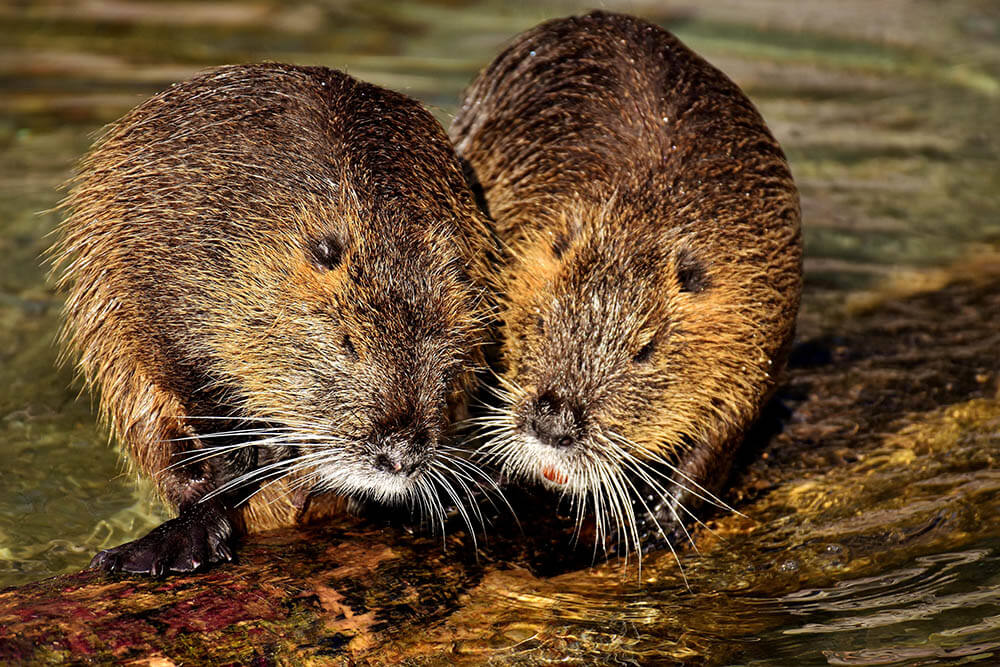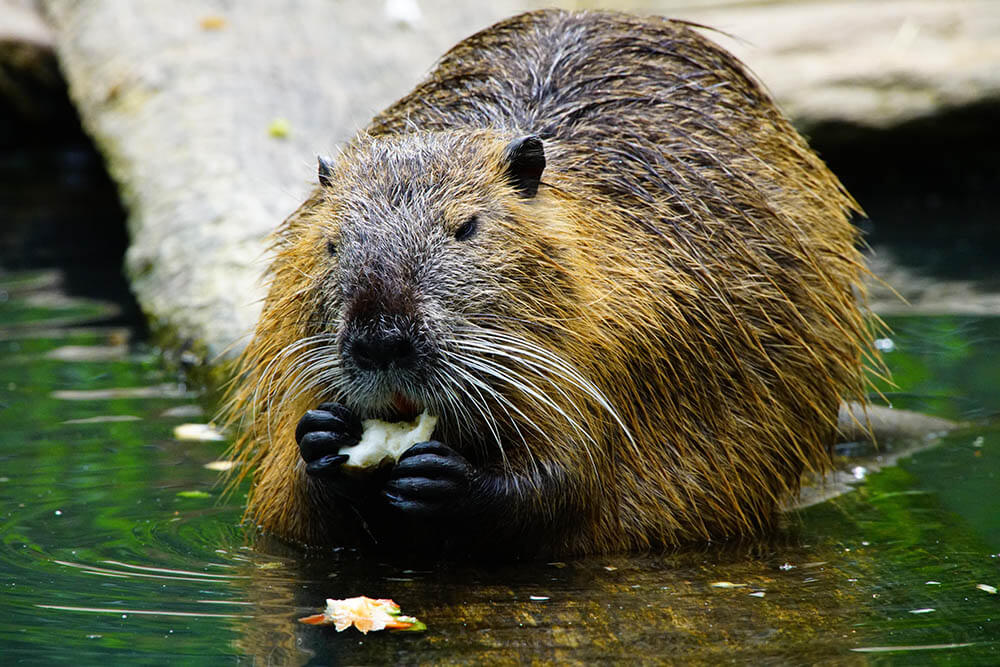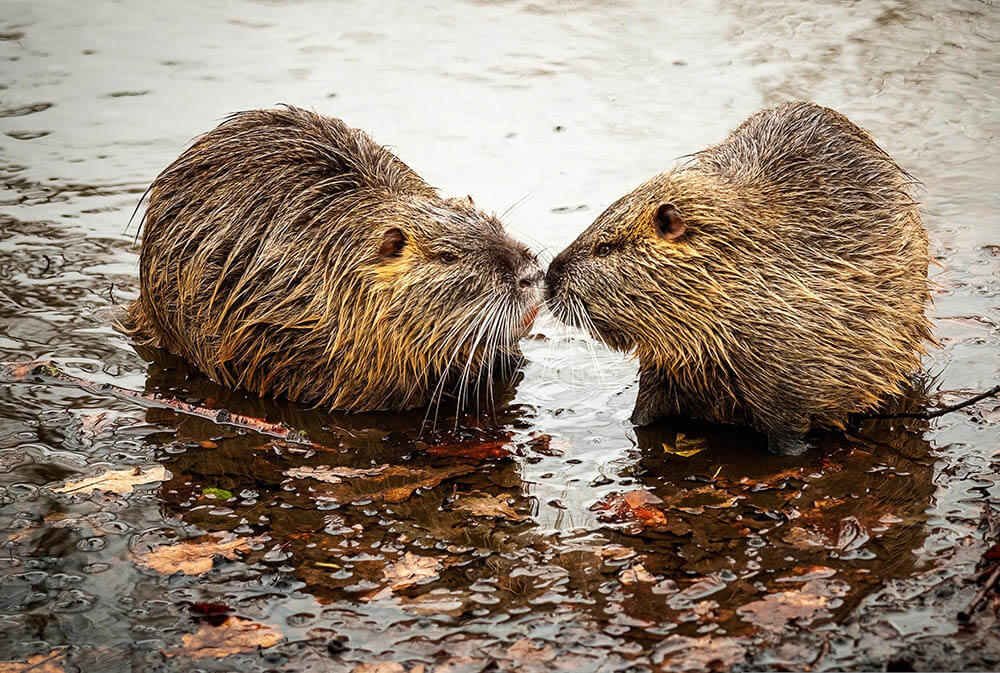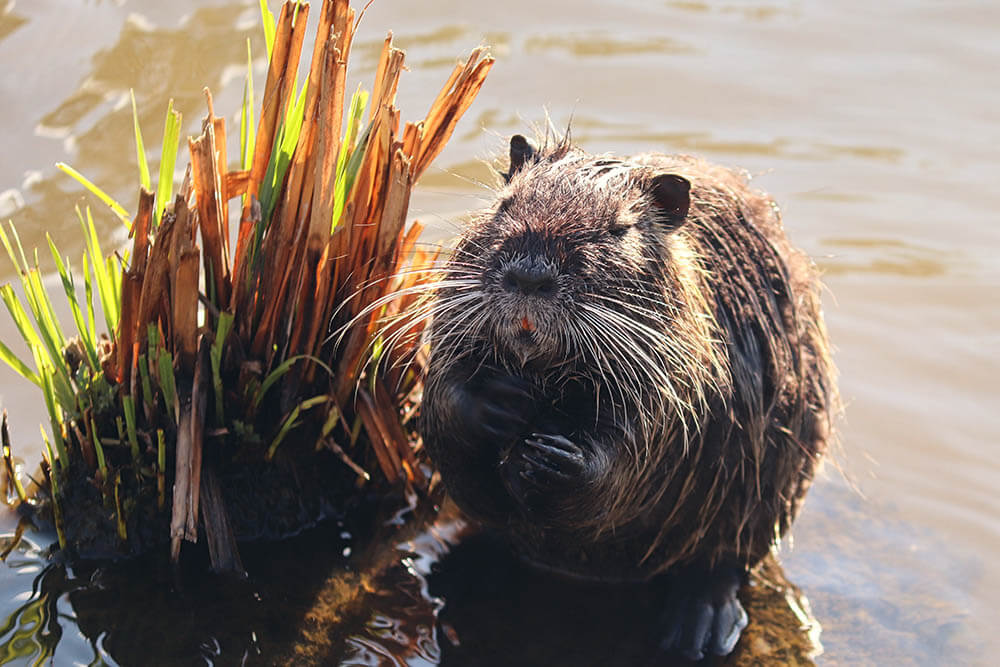Beavers are adorable fluffs of fur with paddles for tails and a penchant for building complex structures out of tree parts.
The question is, can you keep beavers as pets? They’re certainly cute enough. And why would they need to build a home when they can live in yours?
Unfortunately for you beaver enthusiasts out there, these animals make terrible pets. They bite. They destroy furniture. And they urinate and defecate anywhere, anytime.
Still considering getting yourself a pet beaver? Keep reading to find out why that’s a bad idea!

9 Reasons Why Beavers Make Bad Pets
There are many reasons why beavers make bad pets. Let’s check them out, shall we?
1. Beavers are wild animals
Unlike common house pets like dogs and cats, beavers haven’t benefited from thousands upon thousands of years of domestication.
Don’t let their charming appearance fool you; beavers aren’t always friendly toward humans. They’ve been known to behave like aggressive little jerks when threatened. Those big front teeth of theirs? Imagine them sinking into your flesh!
Beavers are nearly impossible to train even if you raise one from youth. You’re not going to have a lot of success teaching them commands or tricks, putting them on a leash and walking them, or getting them not to pee and poop everywhere in your home.
You also shouldn’t expect a beaver to be able to satisfy your emotional needs in the same way a dog or cat can.
2. Beavers require a special diet
Beavers won’t derive all the appropriate nutrients they need from the food you can buy at the pet store. Thanks to evolution, these critters can only observe a herbivorous diet consisting of specific plants found in the wild.
Beavers also like eating the inner bark of trees – specifically what’s known as the cambium layer. Good luck finding that in the grocery!
In other words, you’ll have a challenging time finding the right foods for your exotic pet, which means keeping them healthy will be an exercise in sheer perseverance. Of course, meeting your exotic pet’s special dietary demands will also result in extra costs that can be avoided if you get yourself a normal pet, instead.
3. Beavers need special housing
Beavers can’t survive without a watery area to call home – not to mention they need lots of branches and any wood they’ve stripped off trees to build lodges that can keep them safe from predators.
This means you can’t just bring a beaver home and expect it to be happy. It’ll abhor being kept in a cage. Even if you allow it to roam freely, its instinctive fear of predators will urge it to find water and wood to turn into a home. And it could end up destroying furniture and stealing various items in an attempt to find construction material for said home. Nothing you own is safe – not your couch, not your shoes, not even your stuffed toys.
If you have a pool, expect it to get filthy quickly as the beaver fills it with stuff and builds its lodge. Don’t be surprised if the beaver uses the water as a toilet. This wouldn’t be a problem in the wild, where continuously flowing rivers and streams are always cleaning themselves. However, you’ll have to clean the pool yourself regularly.
4. Beavers are territorial
While beavers can be gentle and docile, they’re also fiercely territorial creatures. If a beaver feels like its home is being threatened, it’ll attack, tooth and claw. Should your pet dog or cat ever approach a beaver’s home out of curiosity, they could get hurt.
Beavers aren’t averse to attacking people, either. Those teeth we mentioned earlier? They’re incredibly sharp, which is why they’re so effective at chopping wood into smaller pieces. They can do such significant damage to flesh that there are cases of people nearly dying from beaver bites. In fact, one man did die from a beaver attack back in 2013 when the animal bit him in the thigh and severed an artery.

5. Beavers love chewing wood
Beavers evolved to chew wood. As discussed above, these critters use wood to build their homes. They also feed on the tree’s cambium layer. Any wood on your property can therefore end up ruined as your exotic pet searches for food to eat or gathers materials for its construction project.
A solution to this is to ensure your beaver has lots of wood to gather and gnaw on. You can, for example, buy firewood or chop up some wood yourself, then place them in a space such as a garage. This can keep your beaver entertained as well as give it what it needs to build its lodge. Of course, this also means additional expenses and hard work that you can otherwise avoid if you had a dog or cat instead.
6. Beavers love water
Beavers create their homes in the water; without water, a beaver’s home is incomplete and, in its mind, unsafe.
A bathtub won’t cut it. Not even a small or medium-sized pool will suffice. The pool has to be enormous enough that it can allow your beaver to build 1) the fortification, or dam, that it can use as protection against predators, and 2) the lodge, which is surrounded by water and positioned behind the dam.
A pool will also allow a beaver to swim – an activity these creatures enjoy and that gives them the exercise they need to stay in optimum health.
In the absence of a pool, a beaver can end up creating a lodge without any of the features required to give it a sense of security – in other words, a lodge that’s inferior to the kind of home it can build in the wild. As a result, your pet can become nervous, restless, and prone to aggressive behavior.
Beavers are highly social animals. In the wild, they live in groups known as colonies. A colony is typically home to between two and eight individuals, and consists of a monogamous couple and their young offspring.
Taking a beaver away from its colony so that it’s all by itself is unnatural, leading to anxiety and stress. And if a beaver is lonely and unhappy, it’s more likely to act in an aggressive, potentially dangerous manner.
8. Beavers are nocturnal
In general, beavers are active at night. During the day, they like to sleep – sometimes as long as 11 hours!
Therefore, unless you’re a night owl, you’re going to have a tough time caring for a pet beaver and ensuring it doesn’t wreck your home with its construction efforts. If you insist on taking a beaver home, be prepared for a radical change in your sleep schedule.
9. Beavers can make you ill
Some beavers carry the microscopic parasite Giardia lamblia. An infected beaver can pass this parasite on to others through its contaminated feces.
If a beaver poops in the pool, the parasite can spread through the water. If any of this water enters your mouth, you could end up ingesting the parasite and getting infected. Children are more likely to be infected than adults.
When the parasite enters your body, it causes giardiasis, whose symptoms include nausea, gas, moderate or severe diarrhea, and/or dehydration due to water loss. Said symptoms typically appear between 7 and 14 days after exposure and can last weeks or months if left untreated.
Thankfully, giardiasis is treatable through medication.
The Legality of Owning a Pet Beaver
It’s illegal to keep a pet beaver in most states.
Of course, there are exceptions, namely Arkansas, Florida, Indiana, Kentucky, Michigan, Missouri, Nebraska, North Dakota, and Texas.
Each state will ask for different requirements before allowing you to keep an exotic pet. Arkansas, for example, will need you to prove that the beaver was acquired legally. Missouri will let you own a beaver if you have a Wildlife Hobby Permit. In addition to obtaining a special permit, Kentucky will require you to satisfy specific confinement requirements.
In short, you’ll need to secure special licenses, permits, insurance, and/or other things before you can keep a pet beaver in the U.S. This will cost you more time, money, and effort than if you were just to get a cat or dog.

8 Amazing Beaver Facts
If you’d like to know more about these fascinating animals, read on!
1. Beavers have short lives
In general, beavers only live 7 to 8 years. In captivity, however, they can live up to 25 years if exceptionally well taken care of.
2. Beavers are crucial to the environment
Beaver activity positively affects the environment in various ways.
For instance, the structures they build create habitats for wetland and aquatic species such as turtles, frogs, otters, ducks, herons, and many others. Their dams act like enormous water purification systems that sift out sediment and silt as well as nourish the surrounding soil.
Without beavers, entire animal and plant species would struggle for survival or possibly even get completely wiped out.
3. Beavers have unique teeth
Beavers’ long incisors are orange due to iron-rich enamel. They don’t stop growing, so beavers need to use them daily to trim them down.
4. Beavers build dams and lodges
Using the wood they’ve gathered, beavers build dams to create a pond. They also use this wood to build a lodge in the middle of the pond. The lodge is where a monogamous couple lives with its young offspring a.k.a. kits.
A lodge looks like an island in the middle of the pond. It can only be entered through openings submerged in the water. The area within the lodge where beavers stay is above the waterline.
Both the dam and the lodge serve as protection against predators.
5. Beavers use their tails to communicate
When an adult beaver detects nearby danger, it slaps its tail on a surface. The loud sounds this creates sends a warning to friends and family in the vicinity, encouraging them to seek refuge.
Beavers also use vocalizations, posturing, and scents to communicate with other beavers.
6. Beavers are North America’s largest rodents
North American beavers are fairly large, measuring 3 to 4 feet long, standing 1 to 1.5 feet tall, and weighing between 35 and 65 pounds.
7. Beavers have amazing breath-holding abilities
Beavers have large lungs that allow them to stay underwater for around 6 to 8 minutes.
8. A pet beaver won’t get along with your other pets
As discussed above, beavers are highly territorial. If your beaver feels your cat, dog, or any other pet is trying to steal its territory, you can expect a vicious, potentially deadly fight.

Conclusion
We don’t recommend keeping a beaver as a pet. These wild creatures have specific needs most people aren’t capable of fulfilling – not to mention they can wreak havoc in your home, infect you with parasites, and significantly injure you and your other pets when aggravated.
Let beavers stay in their natural habitat – don’t keep a beaver as a pet!
